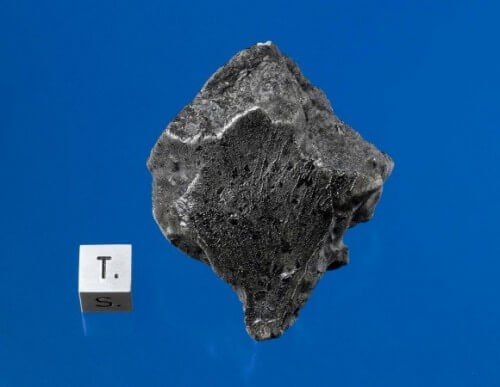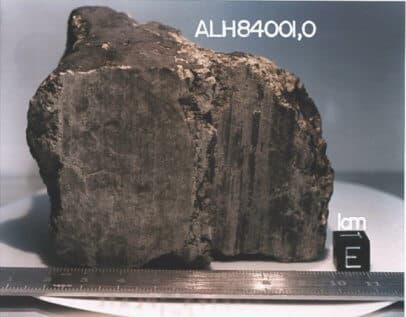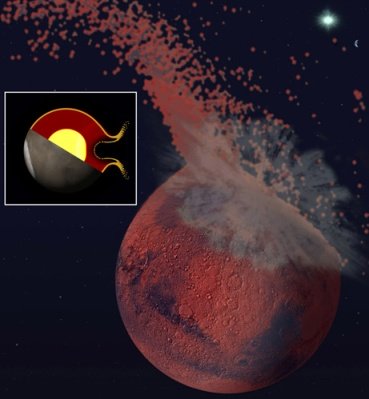The meteorite landed in July 2011, and was discovered almost immediately, now its origin has also been confirmed. Experts: Until we manage to arrange a flight to return soil samples from Mars, this is our best chance to explore the Red Planet

Scientists studying life on Mars this week gained an important means of examining the issue. It turns out that meteorites found in Morocco in December originate from Mars. This is a significant discovery. Meteorites from Mars fall on Earth once every 50 years or so, that is, once in the career of the scientists. The Martian rocks are worth more than their weight in gold, but can provide even greater value.
Astronomers suspect that the meteorite has been traveling through the solar system for millions of years, since a large body hit Mars and sent fragments in all directions. One of these fragments traveled to Earth, and landed after penetrating the atmosphere.
This is only the fifth time scientists have had a rock confirmed to be from a Martian meteorite. Rocks found in France in 1815, in India in 1865, in Egypt in 1911 and in Nigeria in 1962 were identified as adipose.
The chemical signature of the rocks from Morocco and an atmosphere from air match, says Tony Irving of the University of Washington who performed the chemical analysis. But this discovery is different. The rock was not only found but was also seen passing through the sky in July 2011, which makes it especially valuable.
The rock had only half a year to collect earthly materials and signs of life, while the other reddening meteorites spent decades and even thousands of years, thus increasing their chances of catching contamination.

"The meteorite is fresh and therefore has a high value," says Carl Agee, director of the Meteorite Institute and Curator at the University of New Mexico.
The meteorite is also rare thanks to its great weight - about 7 kg, and it brings the total of all identified meteorites to 108 kg. Meteorite values range from $11 per ounce to $22,500 per ounce. At these prices it is worth 10 times its weight in gold.
Artist's impression of early Mars bombarded by an asteroid larger than Texas. The scientists believe that the impact caused the Martian crust to melt in the northern hemisphere, sending fragments into space and sending shock waves through the planet's molten core. This explains why the Martian crust is thinner in the northern hemisphere. Photo: Jeff Anders-Hannah and Francis Nimmo.
Astronomer Cornell Stephen Squires, principal investigator on the Spirit and Opportunity mission to Mars, is less thrilled. The rocks, he said, are not what the scientists expect. They all contain hard volcanic rock. We would be happy to have softer rocks capable of storing water and sustaining life. But he also points out that these rocks will be less likely to pass through the atmosphere, in particular they will not be able to survive the hot entry into the Earth's atmosphere.

In contrast, former NASA chief scientist Alan Stern, director of the Florida Space Institute at the University of Central Florida, is more optimistic. "It's nice to see that Mars is sending samples towards Earth," he said. , especially when our pockets are too empty to get there ourselves. Until we manage to organize a mission to return rocks from Mars, this will be scientists' best chance to explore the Red Planet up close.
For the news in Universe Today
More of the topic in Hayadan:

9 תגובות
Dror, it's perfectly fine to have a sense of humor, that's how we know that we're in the company of humans and we're not reacting here to computers that output..
Thanks
Wow, lucky that you respond here so seriously and in detail... otherwise I wouldn't have known that I was on a site about science.
I found a rock from the little prince's star in the garden.... This is a treasure trove...
It even has an inscription on it... "Two more weeks to Mania.." and something that looks like a snake that swallowed an elephant...
Upon closer inspection, signs of sheep's wool and the remains of roots from what is called the Land of Shoshana were discovered.
And for those wondering... I'm not a seller!
They landed in Madimuna in the fifties
(:))
Good Day
Sabdarmish Yehuda
When will the day come when a meteorite from Morocco lands on Mars?
There are no stupid questions, there are stupid answers
What a stupid question!
The meteorite arrived by airmail with the sender's address on it:-
Have a good day
Sabdarmish Yehuda
P.S. This actually reminds me of the second article on N rays. Soon everyone will claim to have a meteorite from Earth!
How can a rock from Earth be compared to Martian rocks before a thorough geological survey was done on Mars?